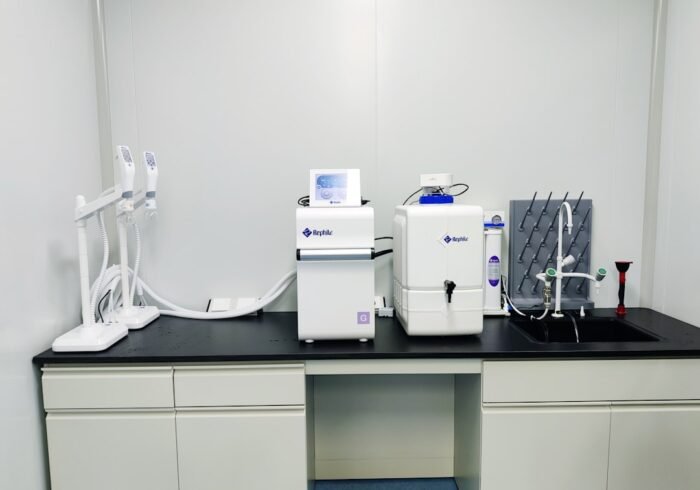Embracing Renewable Energy for the Future of Transportation The transportation industry is a major source of greenhouse gas emissions, contributing significantly to the world’s carbon dioxide output. There has never been a more urgent need to switch to renewable energy sources for transportation as the globe struggles with the effects of climate change. Vehicles that run on fossil fuels have a limited supply and harm the environment.
Key Takeaways
- Renewable energy is crucial for reducing carbon emissions and combating climate change in the transportation sector.
- Electric vehicles are rapidly advancing in technology and becoming more accessible to consumers, offering a sustainable alternative to traditional gasoline-powered cars.
- Biofuels are gaining popularity in the transportation industry as a renewable and low-carbon alternative to fossil fuels.
- Solar-powered transportation options, such as solar cars and buses, are emerging as sustainable and efficient modes of travel.
- Wind energy is playing a significant role in revolutionizing transportation by powering electric vehicles and contributing to sustainable public transportation systems.
Reliance on these conventional energy sources has resulted in health problems, air pollution, and an increase in worries about energy security. Therefore, using renewable energy for transportation is essential for sustainable development and not just a choice. Also, the need for effective and environmentally friendly transportation options is growing as a result of urbanization and the world’s population growth. As cities grow and more people depend on cars for their everyday commutes, the environment & current infrastructure are under increasing stress. The carbon footprint of transportation systems can be considerably decreased by switching to renewable energy sources like solar, wind, and biofuels.
Societies can strive toward cleaner air, less reliance on imported fuels, and economic growth through the creation of green jobs by investing in these alternatives. A key component of the movement toward more environmentally friendly transportation is electric vehicles, or EVs. The efficiency and range of EVs have increased dramatically over the last ten years due to developments in battery technology, making them a competitive alternative to conventional gasoline-powered vehicles. Lithium-ion batteries are one example of an innovation that has improved performance while lowering costs, increasing consumer access to electric vehicles.
The future of electric vehicles appears bright as long as manufacturers keep funding research and development. Even greater range and faster charging times are anticipated. Government regulations and incentives, in addition to technical developments, have been instrumental in encouraging the use of electric vehicles.
| Metrics | Data |
|---|---|
| Electric Vehicle Sales | Increasing by 50% annually |
| Renewable Energy Usage | Projected to reach 40% by 2030 |
| Reduction in Carbon Emissions | Expected to be 30% by 2025 |
| Investment in Renewable Energy Technology | Surpassing 100 billion in the next 5 years |
To incentivize consumers to convert from fossil fuel-powered vehicles to electric ones, numerous nations have instituted tax credits, rebates, and subsidies. Also, reducing range anxiety in prospective EV owners requires the development of charging infrastructure. The convenience of owning an electric vehicle grows as charging stations proliferate in cities & along highways, opening the door for a wider adoption of this environmentally friendly form of transportation. In the transportation industry, biofuels have become popular as an alternative energy source because they provide a sustainable solution made from organic materials like waste, algae, & crops. Because they can be naturally replenished, biofuels are a sustainable alternative to fossil fuels for vehicle power.
The integration of two well-known biofuels into current fuel systems—ethanol & biodiesel—allows for a more seamless shift away from conventional fuels without necessitating major engine modifications. Biofuels’ increasing popularity helps agricultural economies in addition to lowering greenhouse gas emissions. Utilizing waste materials that would otherwise end up in landfills or crops cultivated especially for fuel production, biofuels establish a circular economy that benefits nearby farmers as well as the environment. To prevent future disputes over land use, it is crucial to strike a balance between the production of biofuel and the demands of the food supply. The potential for sustainable fuel options in transportation is still enormous as research into advanced biofuels made from non-food sources continues.
Solar energy has become a significant force in the field of renewable energy, providing cutting-edge transportation solutions. Solar-powered cars provide a sustainable and clean form of transportation by using photovoltaic cells to capture sunlight & convert it into electricity. Solar technology has advanced significantly in recent years, despite still being in its infancy when compared to electric vehicles. Solar panels that can be mounted on the outside of cars are being developed by companies, enabling them to recharge in the sun while parked or even while driving.
In addition to private automobiles, public transit systems are also using solar energy. Solar-powered buses can lower emissions & operating expenses while still offering communities dependable service. A synergistic relationship between solar energy and electric transportation is also being created by the establishment of solar-powered charging stations to support electric vehicles. Solar-powered vehicles are anticipated to proliferate as costs come down and technology advances, helping to create a more sustainable & clean future.
Wind energy is yet another renewable resource that has the potential to revolutionize the transportation industry. Although wind energy is best known for producing electricity, it can also be used to electrolyze hydrogen to create fuel. In order to create a clean fuel source suitable for fuel cell vehicles, this process uses electricity produced by wind turbines to split water into hydrogen and oxygen. Wind energy’s potential to help produce hydrogen offers a fascinating chance to diversify transportation’s energy sources. Also, some transportation applications can directly use wind energy. For example, some businesses are looking into using wind-assisted propulsion systems for ships and big cargo carriers.
These boats can drastically cut emissions and fuel consumption by using wind power while in transit. Incorporating wind energy into maritime transportation could be essential to reaching sustainability targets in the sector as awareness of the negative environmental effects of shipping and logistics grows. The operation of fuel cells. Fuel cells react chemically with oxygen to turn hydrogen gas into electricity, with the only byproduct being water vapor. Compared to conventional battery-powered electric cars, this technology has a number of benefits, such as quicker refueling and greater driving range.
acceptance in the field of transportation. Numerous models of hydrogen fuel cells are currently on the market, demonstrating the potential of this clean energy source as automakers invest in its development. Beyond passenger cars, hydrogen fuel cells can also be used in trucks, buses, and even railroads. In an effort to lower emissions while preserving operational effectiveness, public transportation systems are starting to implement hydrogen fuel cell technology.
obstacles and potential paths. Nonetheless, there are still issues with infrastructure development and hydrogen production techniques. Switching to green hydrogen made from renewable resources is crucial for optimizing environmental benefits because the majority of hydrogen is currently produced from natural gas using a process that releases carbon dioxide.
A key part of urban infrastructure, public transportation systems are essential for lowering emissions and traffic jams. These systems’ sustainability can be greatly increased by incorporating renewable energy sources, which also offer communities dependable services. Cities can move away from fleets of diesel-powered buses by implementing renewable energy-powered electric buses, which will reduce greenhouse gas emissions & improve air quality. Incorporating renewable energy into public transportation infrastructure can also result in synergies that are advantageous to both passengers and operators.
For instance, solar panels mounted on train stations or bus shelters can produce electricity for electric vehicle charging stations or lighting. This not only lowers operating expenses but also encourages a sustainable culture in localities. Long-term environmental objectives will require incorporating renewable energy into public transportation as cities continue to place a high priority on green initiatives. Even though using renewable energy in transportation has many advantages, there are still a number of issues that need to be resolved before it can be widely adopted. The upfront costs of switching from conventional fossil fuels to renewable alternatives are a major obstacle.
Costs up front can still discourage businesses and consumers from switching, even though the cost of technologies like solar panels & electric cars has gradually dropped. Another issue is the development of infrastructure. Refueling stations, charging stations, and maintenance facilities for electric buses and trains are all necessary for the effective integration of renewable energy sources. In order to develop comprehensive plans that address these infrastructure needs and guarantee equitable access across various communities, governments must work with the private sector.
In summary, using renewable energy in transportation offers a chance for innovation and economic expansion in addition to being an environmental necessity. A cleaner future can be achieved by societies investing in hydrogen technology, electric vehicles, biofuels, solar, wind, and public transportation integration. Governments, corporations, and communities must work together to overcome obstacles, but the possible benefits—cleaner air, lower emissions, and sustainable economic growth—make the effort worthwhile.



